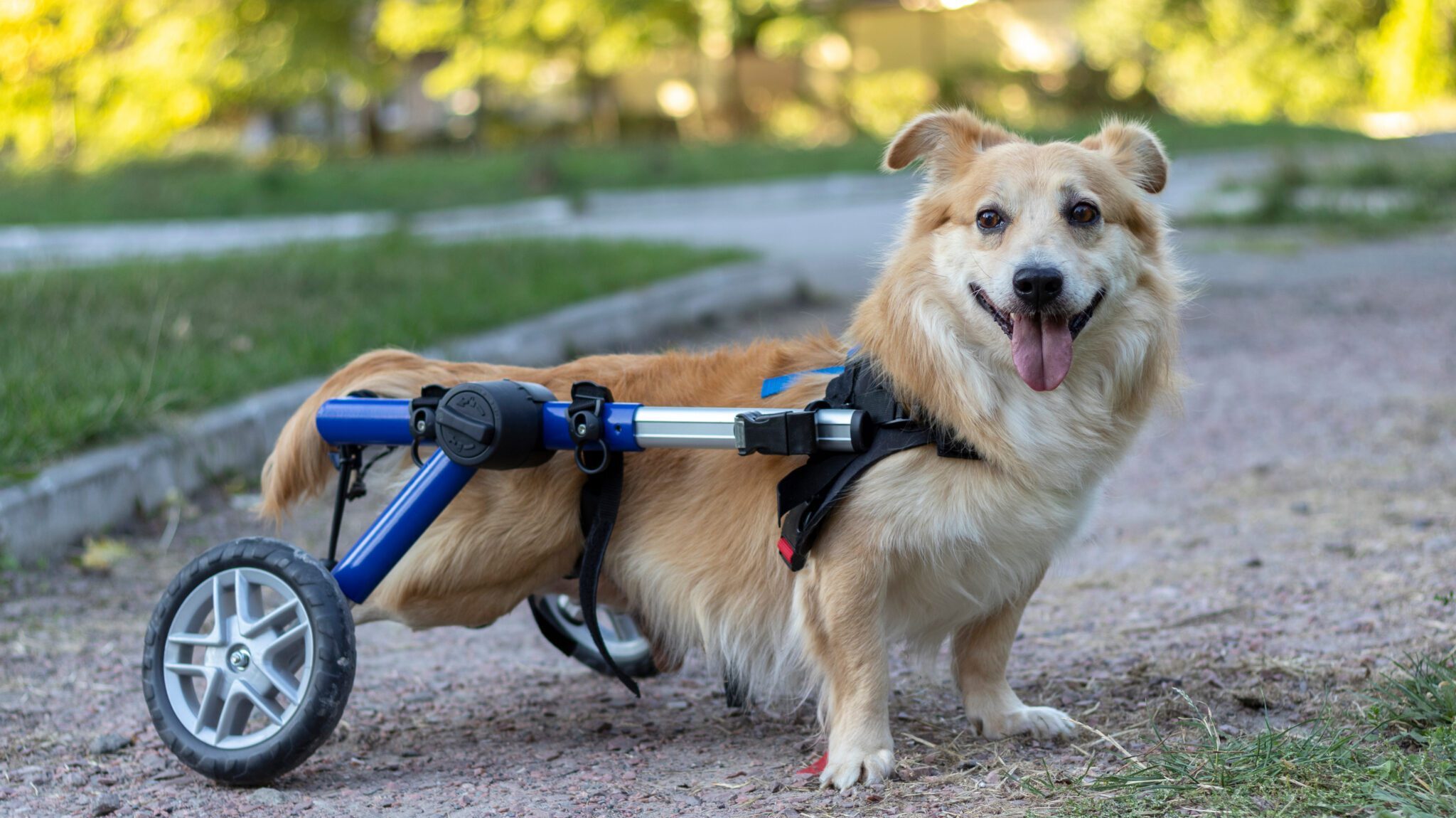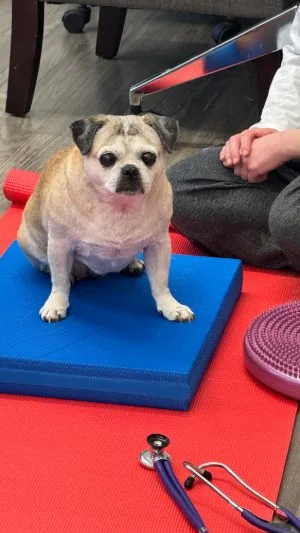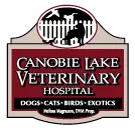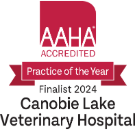Physical Rehabilitation
Physical rehabilitation is analogous to physical therapy in humans. The goals of physical rehabilitation (“rehab”) are, very broadly, to restore, improve, and/or maintain the comfort and mobility of our pets.
Some examples of patients who may benefit from rehab include, but are certainly not limited to:
- Pets recovering from orthopedic or neurologic surgery
- Pets with non-surgical orthopedic or neurologic concerns. (Examples include: Hip dysplasia, joint injuries, disc disease or back pain, vestibular syndrome or degenerative myelopathy)
- Age related mobility concerns
- Any pet with osteoarthritis (arthritis) or weakness when walking or playing
- Overweight pets
- Canine athletes
Physical rehabilitation should be overseen by a professional certified in canine or pet rehabilitation such as a CCRP (“Certified Canine Rehabilitation Professional”), which indicates they have undergone additional specialty training in the field.
Understanding Pain in Pets
Signs of Pain in Pets
- Reduced grooming
- Hiding or sleeping in strange places
- Loss of appetite
-
Limping or difficulty jumping
-
Inappropriate urination either out of the box or around the box
- Whimpering or whining
- Restlessness
- Limping
-
Decreased activity or unwilling to jump on furniture or do stairs (up or down)
-
Difficulty rising to a standing position or taking a long time to lay down
-
Unwillingness to walk on tile, hardwood floors or slippery surfaces
What we can do to help with your pet live a pain-free life
-
Consult with Dr. Parnell or one of our veterinarians: Always seek professional advice for accurate diagnosis and treatment plans. Pain can show up for many reasons.
-
Medications: There are specific pain medications for pets which can be custom tailored to your pet. The options are many so best to discuss with our veterinarians.
- Alternative Therapies: Acupuncture, physical therapy, hydrogen therapy, and laser therapy are just a few that can help alleviate pain.
-
Environmental Adjustments: Soft bedding, easy access to food and water, and minimizing stairs can make a big difference. Depending on the issue a tailored plan can be made for your pet.
-
Supplements: There are many supplements which can make a difference depending on your pet’s condition. We have veterinarians trained in functional, homeopathic, holistic and integrative medicine that can make an individualized plan for your pet.

Physical Rehabilitation Appointments
The first step is an initial consult with the rehab certified veterinarian. A thorough history is collected followed by a physical examination. We will use our Wellvu thermal imaging camera to scan your pet for areas of inflammation. A general physical exam will be performed by our rehab certified veterinarian along with a comprehensive and stepwise orthopedic and neurologic assessment. If indicated, recommendations for additional diagnostics will be made.
Once the problem areas are identified, an individualized rehab plan will be formulated and the recommendations will be discussed. In addition to therapeutic exercise, the plan may also include any recommendations for changes in pain management, lifestyle adjustments, and/or nutrition.
We kindly request that you fill out this online history form a minimum of 24 hours prior to your consult appointment. By doing so, it will allow us more time to discuss exam findings and recommendations.
There are several types of treatments that may be included in your pet’s customized rehab plan.
Here is a summary of some of the types of treatments that we offer:
- Therapeutic Exercise: Targeted individualized therapeutic exercise is a key part of a rehab program. Exercises are commonly prescribed to strengthen muscles, improve joint range of motion and flexibility, and improve balance and proprioception. For most pets, there will be a recommendation for therapeutic exercise in the clinic under the guidance of the CCRP as well as some exercises to do at home. When home exercises are prescribed, you will receive an email with instructions and videos from the popular program Gogocharlie.com
- Manual Therapy: Manual therapy refers to a specialized type of hands on therapy that may include therapeutic massage and/or joint mobilizations. These techniques may be incorporated into your pet’s plan for relaxation, pain reduction, and improving joint range of motion.
- Therapeutic Modalities:
- Laser: The most common modality used with rehab is therapeutic laser. We have a class IV laser to use in the hospital and when appropriate, can rent out a lower class laser for home use. Some benefits of laser can include reducing inflammation and swelling, reducing pain, and speeding and optimizing the healing process. Please see our page on laser therapy
- Neuromuscular Electrical Stimulation (NMES): This modality uses electrical stimulation to trigger muscle contraction when the pet is not strong enough to produce their own contraction.
- tPEMF (targeted pulsed electromagnetic field): This is another therapy that may be recommended for home use. It uses an electromagnetic signal that can reduce inflammation, pain, and speed healing.
- Assistive Devices: If indicated, we can also give advice on special mobility assistive devices. For custom devices, we can assist in measuring, fitting, and training/rehab to the devices.
-
- Custom orthotics or prosthetics
- Carts or wheelchairs
- Over-the-counter braces and splints
- Paw protection and traction
-

If you think your pet would benefit from a rehabilitation program, please call the clinic to schedule a consultation at 603-898-8982.





